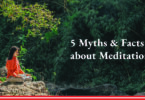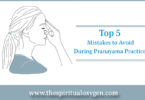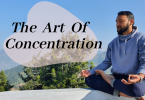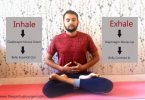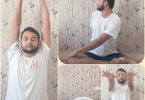Now days it has become very common that people complain about their back pain. Back pain can affect people of any age, for different reasons. Whether it is a stiff point on the upper back or a sensitive point on the low back which stops you from bending down, back problems can hamper your day-to-day life therefore people are absent from work or seeking medical treatment. In such case, it is not recommended to ignore this issue because it can get worse. In this all situation yoga for back pain can be life saving grace.
The human back is composed of a complex structure of muscles, tendons, ligaments, disks, and bones, which work together to support the body and enable us to move around. Problems with any of these components can lead to back pain. Generally pain in lower back may be linked to the bone in lumbar spine, ligaments around the spine, discs between the vertebrae and discs, spinal cord and nerves, lower back muscles, abdominal and pelvic internal organs. Pain in the upper back may be due to disorders of the aorta, tumors in the chest, and spine inflammation. But in some cases cause remains unclear.
Yoga for back pain can work as miracle in most cases. Yoga is a holistic approach to health. Various aspect of yoga such as asana, Pranayama and Meditation can work wonder in back pain. When you practice Yoga Asana, you focusing on poses that stretch the back can work different muscles to improve any imbalances and alignment issues that could be at the root of your pain and as well as correct your posture, improve flexibility.
Luckily, there are a few yoga postures and breathing to strengthen your back and in turn, enhance your posture.
Marjaryasana (Cat & Cow pose)

Practice of this posture is a gentle stretch of the spine to begin any workout or yoga asana session. It also helps stretch out the neck, shoulders, and torso, and increases flexibility over time.
How to do:
- Start in a tabletop position on all fours with your knees below your hips and wrists below your shoulders.
- Inhale, letting the stomach drop, lifting the sitting bones upward while drawing the head and shoulders back, and chest forward.
- Exhale, arching your back like a cat, bringing the belly button toward the spine and pelvis in toward the rib cage, tilting your head toward the floor.
- Shift between these two positions 5 to 10 times.
Salabhasana (Locust pose)
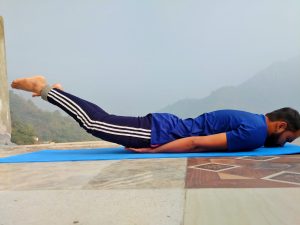
The name comes from the Sanskrit word shalabh, which means grasshopper. The Locust Pose or Shalabhasana is a backbend that stretches and tones the entire back of your body.
How to Do It
- Lie on your abdomen on the ground and place your hands by your side.
- As you inhale, lift your legs and your upper torso.
- Using your inner thighs, lift your leg upwards without bending your knees. Your weight should rest on your lower ribs and abdomen.
- Hold the pose for 30 – 60 second and then release.
- Repeat the process 5 times and more.
Bhujangasana (Cobra pose)
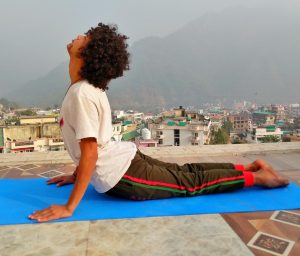
Bhujangasana can be done just after the locust. As this have already activated your lower back muscles, the benefit doubles.
How to do:
- Lie on your stomach with your hands under your shoulders and your fingers facing forward.
- Draw your arms in tightly to your chest. Don’t allow your elbows to go out to the side.
- Press into your hands to slowly lift your head, chest, and shoulders.
- You can lift partway, halfway, or all the way up.
- Maintain a slight bend in your elbows.
- You can let your head drop back to deepen the pose.
- Release back down to your mat on an exhale.
- Bring your arms by your side and rest your head.
- Slowly move your hips from side to side to release tension from your lower back.
Balasana (Child pose)
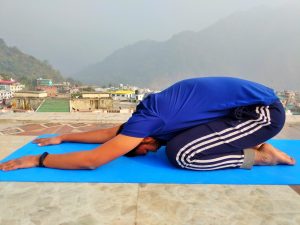
It is an extremely helpful pose. What it does is give the spine a nice stretch and take the pressure off your lower back, providing instant relief.
To do this:
- Sit back on your heels with your knees together.
- You can use a bolster or blanket under your thighs, torso, or forehead for support.
- Bend forward and walk your hands in front of you.
- Rest your forehead gently on the floor.
- Keep your arms extended in front of you or bring your arms alongside your body with your palms facing up.
- Focus on releasing tension in your back as your upper body falls heavy into your knees.
- Remain in this pose for up to 5 minutes
Matsyendrasana (Spine twisting)
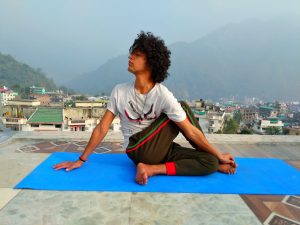
This twisting pose energizes your spine and helps to relieve backache. It stretches your hips, shoulders, and neck. This pose can help alleviate fatigue and stimulate your internal organs.
How to do this:
- From a seated position, draw your right foot in close to your body.
- Bring your left foot to the outside of your leg.
- Lengthen your spine as you twist your body to the left.
- Take your left hand to the floor behind you for support.
- Move your right upper arm to the outside of your left thigh, or wrap your elbow around your left knee.
- Try to keep your hips square to deepen the twist in your spine.
- Turn your gaze to look over either shoulder.
- Hold this pose for up to 30 to 60 second according to your comfort.
- Repeat on the other side.
Pawan-muktasana (Wind-releasing pose)
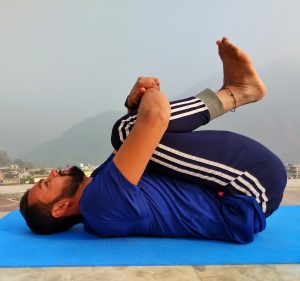
The Wind-Releasing Pose is a reclined posture that is suitable for everyone, whether they are beginners or advanced practitioners. This is one of the best yoga poses for back pain relief and also helps to release digestive gases from the intestines and stomach with great ease. It is also called the One-Legged Knee-to-Chest Pose.
How to Do It
- Lie flat on your back on a smooth surface, ensuring that your feet are together, and your arms are placed beside your body.
- Take a deep breath. As you exhale, bring your knees towards your chest, and press your thighs on your abdomen. Clasp your hands around your legs as if you are hugging your knees.
- Lift your head and chest off the floor. Touch your chin, and eventually, your nose to your knee.
- Hold the asana while you breathe normally. Every time you exhale, make sure you tighten the grip of the hands on the knee and increase the pressure on your chest. Every time you inhale, ensure that you loosen the grip.
- Exhale and release the pose after you rock and roll from side to side about three to five times. Relax.
Setu bandha asana (Bridge pose)
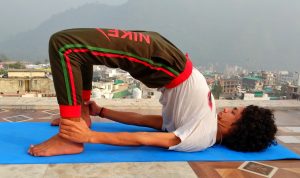
This asana builds back strength and protects the health and flexibility of spine and improves posture as well as soothes the sciatic nerves.
How to do:
- Lie the mat with your back on the floor
- Arms must be on the sides of your things
- Bend both knees, placing feet flat on the floor and hip-width apart
- Press the feet into the floor, lift the chest, back and hips off the floor
- Maintain the pose for 30 seconds
- Bring your back down
Pranayama (Breathing techniques)
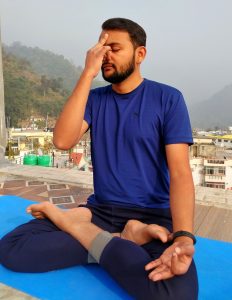
Breathing is probably the only body function that we perform voluntarily and involuntarily. By the conscious breathing our nervous system reacts, thus breathing exercises can have effect on the body function and reactions which are beyond conscious control of humans – such as pain. Deep Breathing exercises leads to relaxation of the body and mind. So, breathing exercises can be a way to deal with chronic back pains.
- For you to effectively use your diaphragm for breathing, you need to make sure your belly expands as you breathe in.
- You want to breathe in through the nose and out through the mouth – nothing in the chest and all in the tummy.
- Place a hand on your stomach. It should raise on the inhale.



